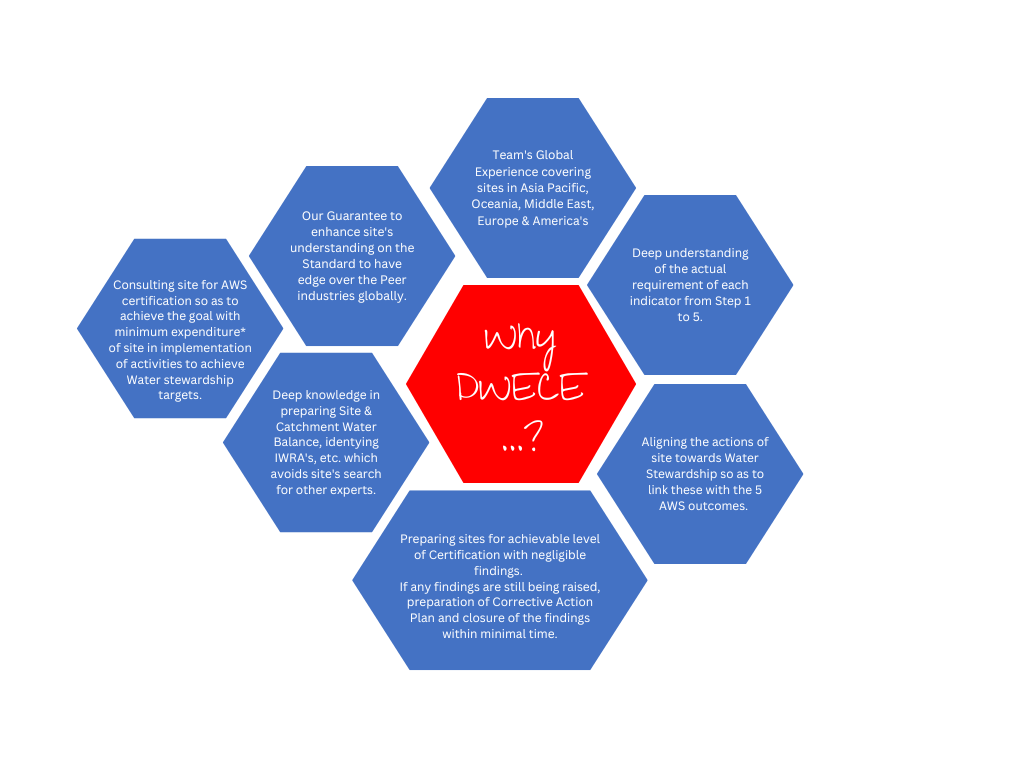Alliance For Water Stewardship Certification
The AWS Standard (“the Standard”) is intended to drive water stewardship, which is defined as the use of water
that is socially equitable, environmentally sustainable and economically beneficial, achieved through a
stakeholder-inclusive process that involves site and catchment based actions.
Globally companies are increasingly using AWS certification to manage reputational risk, improve relationships
with customers, increase investor confidence, strengthen social license to operate, improve brand perception and
dialogue with regulators and policy makers.
The Standard outlines a series of actions, criteria and indicators for how one should manage water at the site
level and how water management should be stewarded beyond the boundaries of a site.










